Fly Fishing: Float N’ Fly Rig for the Fly Rod
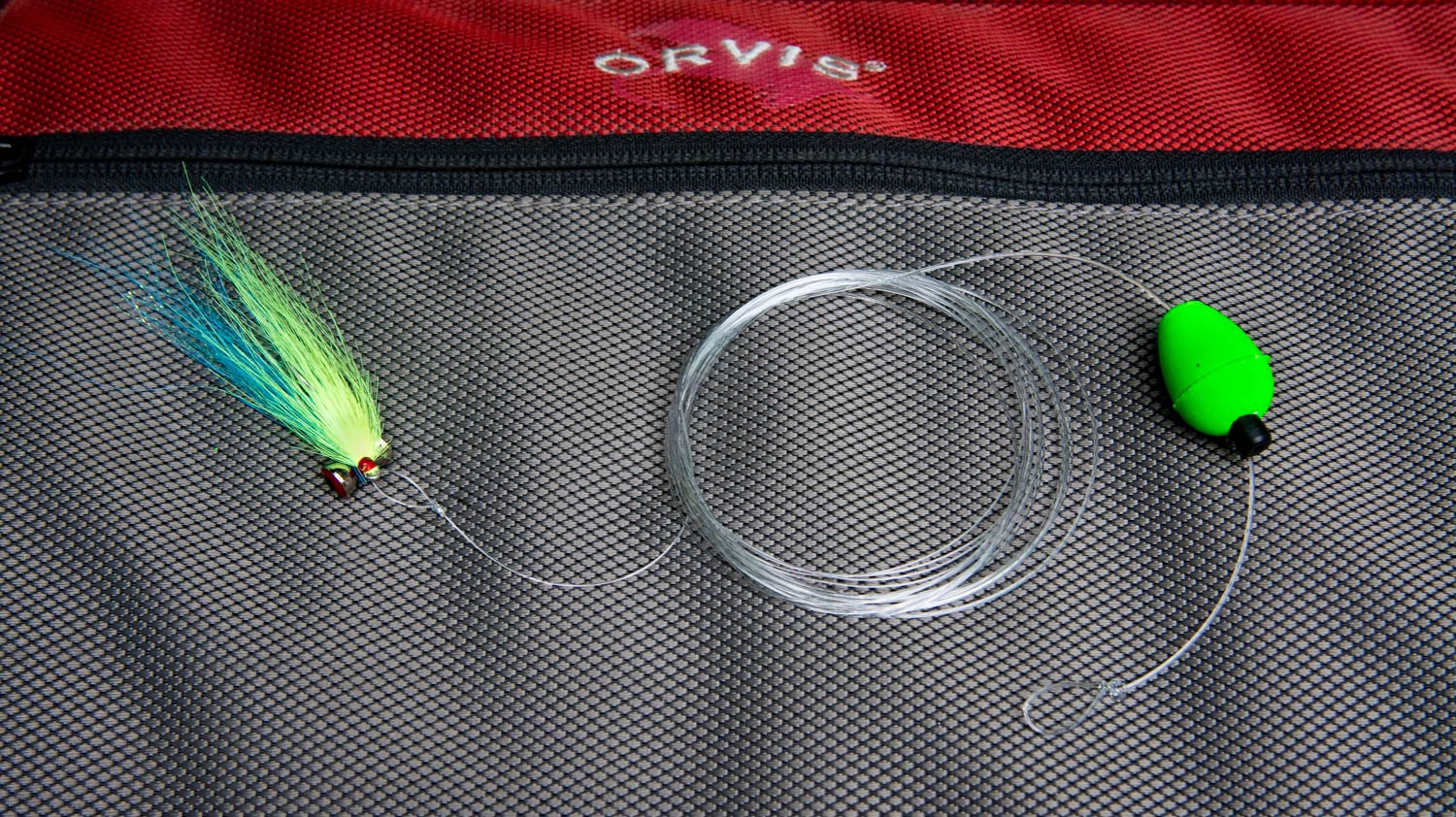
This past week I wrote a fly fishing tactics post for targeting bass on reservoirs during the fall. At the tail-end of the post, I touched base on how effective a Float N’ Fly Rig (basically a nymphing rig on my fly rod) can be for catching good numbers of bass during the late fall and winter months. From late fall through winter, when water temperatures begin dipping into the mid-50s and lower, catching bass on deep reservoirs with traditional fly fishing setups can become extremely difficult for two reasons. The first reason is because bass start becoming sluggish as their metabolisms plummet from cooling lake water temperatures. With lower metabolisms, bass feed less frequently and they also move shorter distances to forage on food (in an effort to conserve energy). This is bad news for fly anglers because it drastically shrinks the size of the strike zone (the hot zone around a bass that a fly or lure needs to enter, to consistently trigger bites) and it makes it much harder for fly anglers to find, present, and retrieve fly patterns through these small strike zones. The second reason the bass fishing is tough this time of year is because a good portion of the bass on the lakes will move out of the shallow water feeding grounds of the fall and back out into the main lake deep water areas, where they’ll often suspend in the water column in 10-25′ of water.
The main problem with cold water suspended bass is that it’s really hard for fly anglers to keep their fly patterns in the strike zone throughout the entire retrieve. It’s really only in front of the bass for a small percentage of the retrieve. The first half of the retrieve an angler struggles to get the fly down to the level of the bass, and the last half of the retrieve, the fly is coming up and out of the strike zone as it gets closer to the angler and the boat on the surface. With a Float N’ Fly Rig, the suspension/floating device (strike indicator set to a preferred depth) allows you to maintain a consistent depth with your fly pattern during the entire retrieve, even when you’re working it extremely slow to entice cold water bass. That’s critical for triggering lethargic bass that often need to be coaxed into feeding. What you’re trying to do with your float n’ fly rig is make that baitfish jig pattern look injured or dying. It needs to look like an easy meal and the bass will suck it in if you get it close enough to them. The best technique is to make a cast to the bank, let your fly sink, and then slowly bring the entire rig back to you with very subtle rod tip bounces or jiggling. All you want is the strike indicator to barely be moving as you’re bringing the rig back to you. I usually stop the twitching and pause for 20-30 seconds a couple of times during each retrieve. The more windy the day is or the more chop there is on the water, the less you have to twitch the rod tip, because you’ll naturally get action on your jig from the choppy or wavy water on the surface.
Read More »It’s Good To Be The Hero…I Guess?
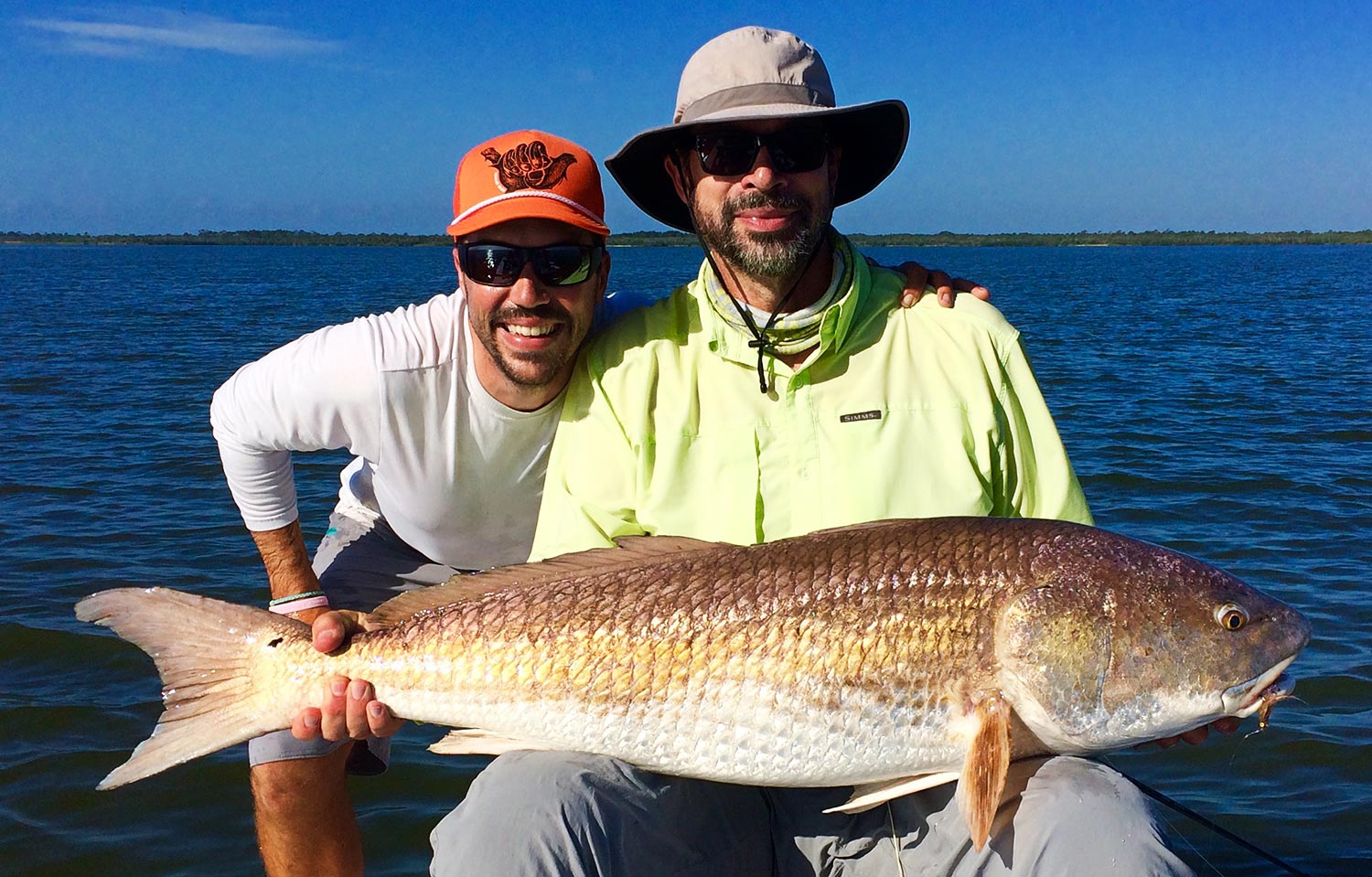
By Louis Cahill
Everybody wants to catch the big fish.
The skiff glides over the flat calm water, running from the dark of night into the blue and pink Rorschach test of the coming dawn. Every few minutes Jessie Regestor, our guide, kills the throttle and makes a hard turn when a big push of water breaks the perfect symmetry ahead. The lagoon is full of life, including a good number of sleeping manatees, wakened by the whirring propeller.
This is my first trip to Mosquito Lagoon. I likely would not have taken the time to fish, the day before the IFTD show in Orlando, if my buddy Johnny had not invited me. There are few folks I enjoy sharing a boat with as much and with him running two successful fly shops, we don’t get to do it enough. I’m always excited to see new water and, of course, I’ve heard all of the stories about how educated the lagoon redfish are. I’m looking forward to a challenge.
I live near the coast, so I insist the guy from Colorado take the first shift on the bow. The sun is just creeping up so we pole an edge looking for pushes and tails. Johnny gets a couple of shots but they aren’t easy ones and he’s met with the response we’ve been told to expect. Refusal. He makes a few more perfect presentations without a hookup and puts me on the bow.
Not long after, Jessie spots a group of tailers directly in the glare of the morning sun. He takes his time and poles us into position where we have the sum from our left, where I have good visibility and can make a cast without my line making a shadow over the fish. This is the first time Jessie and I have fished together but I’m already a fan. That kind of strategic fishing gets results.
These fish are all big, but a couple of them are downright beasts. Their big tails waving like fans at country church in August. I make a couple of casts, which go ignored, before putting the fly right in front of one of the better fish. The fish sees it and turns on it. I strip short and quick as the fish moves but the line comes tight on something small. A ladyfish has cut him off and grabbed my fly. I horse the little guy out of the water and go for the hook but he’s swallowed it.
“Give him to me,” Johnny says, reaching for the fish with his left hand, pliers in his right.
The big fish is still happy, doing headstands about fifty feet off the bow. Johnny gets my fly back and I make another cast. Perfect presentation, except the lady fish had trashed my leader and the fly sailed away on the first false cast. I land an empty leader in front of the fish and let go with some colorful language.
“Give me your leader,” Johnny calls from behind me.
He pulls a fly out of my box and ties it on. I don’t even look at it. I’m watching the big tail, keeping track of the fish. When he hands me the fly I see what he’s chosen. It’s an experiment I tied after a couple of beers. Something I thought was genius at the vise and later viewed with scepticism. I’d never had enough confidence to fish it.
Read More »Finding the Hidden Carp

By Dan Frazier
“FLASH YOUR BREAK LIGHTS A THOUSAND TIMES BEFORE WE TURN OFF OR THE CAR BEHIND YOU WILL SMASH INTO YOUR REAR END,” TREVOR YELLED THROUGH MY PHONE.
I was following him through downtown Denver at 50 mph on our way to a second spot to fish for the day. All of a sudden, his break lights lit up like a strobe light at a rave and I begin tap-dancing on my brake pedal. In what looked like a scene from a heist movie, Trevor suddenly veered off the road, not at an intersection, and comes to a screeching halt on a tiny patch of concrete under a construction sign. I put my rental car to the test, swerved without slowing and then laid on the brakes before I climbed up Trevor’s tail pipe. Had I not had antilock breaks the screeching tires and blue smoke would have made the slide-stop that more dramatic. Instead, I came to a quick but reasonable halt behind Trevor’s car. The black BMW missed rear ending me by inches and the driver screamed out the wind at me as he flew past.
We geared up and waited for traffic to clear, eventually bounding across the 4-lane road to get to the top of the wall. The water was 25 feet down as we hiked along, but it wasn’t directly below us. Ten feet down was a dirt ledge and another 15 feet from there was a sloping shoreline. The ledge was littered with the encampments of Denver’s homeless. We walked along, looking for carp. When we saw our first tailer, Trevor started taking off his gear and handed me his rod. He then lunged over the ledge into the crotch of a tree and shimmied his way down to the lower ledge. From there he could get a presentation on the fish.
Trevor isn’t the only master carp-on-the-fly angler that has taken me to spots that are insanely difficult to access; places that leave you scratching your head and thinking, “how the hell did he figure out how to get access here?”
John Montana has put me (and anyone that fishes with him) through the same paces. We’ve parked under overpasses and on unfinished off-ramps, slid down 60-foot scree slopes and bounded along railroad tracks. Both he and Trevor have taken me to spots that either currently were illegal to fish, or had been when they’d first been busted. Most you can sweet talk your way into getting permission… some you just get sneakier. Hell, I have places that involve crossing electric fences or parking at marginal pull-offs and hoping your car isn’t towed when you get back.
Until I was screeching to a halt with Trevor, however, this commonality had never occurred to me. We talk about carp being accessible to everyone and within walking distance of your house. And that’s true… carp are. But the guys putting up real numbers and big fish have spent hundreds of trips and thousands of hours scouting for both location and access. And they can be fiercely protective of these spots and access points. You
Read More »Hemostat Hacks For Fly-Fisherman
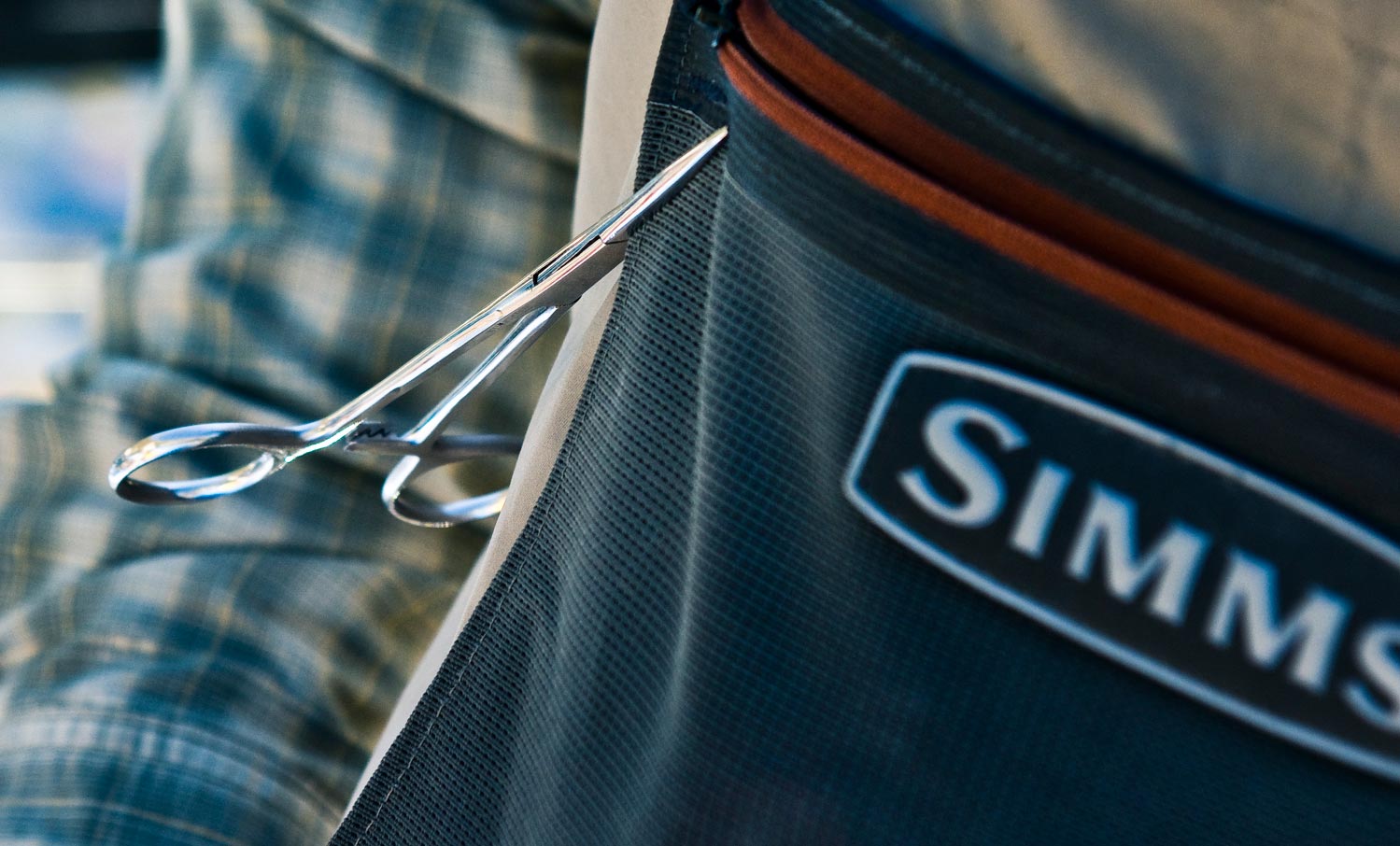
By Justin Pickett
A pair of hemostats can save a fly fisherman serious time on the water!
If I were asked what one tool, or accessory, I absolutely have to have with me on the water, I would have to say it is, without a doubt, my trusty pair of hemostats.
Not my sunglasses, nippers, or my net, but hemostats. All of my tools are useful, but I can’t stand it when I find out that I’ve left the house without my hemos. When I do, I immediately start thinking of where the nearest drugstore might be, hoping that they’ll have a backup pair on the shelf.
In my opinion, they are an invaluable tool to a fly angler. I use them for so many things when I’m on the water. Of course the most common use is to aid in removing the fly from a fish’s mouth. However, one of the main reasons why I love my hemostats so much is that they help me tie the knots I use the most while I’m on the water, the triple surgeons, and the clinch. These easy tricks save me tons of time re-tying my rig while on the water, and are extremely helpful during the winter months when dexterity is hindered by the frigid temps.
Having a hard time holding on to that size #22 zebra midge? Using hemostats makes tying on small flies easy as pie. If I break my entire rig off on a snag, it doesn’t take me ten minutes to get re-tied. It keeps my flies in the water longer, which increases my chances of catching fish.
It’s no secret folks. You have to have your flies in the water in order to catch fish. So if these tips and tricks help save you a few minutes re-rigging, that’s easily gaining you at least a few more casts and presentations each time!
Here’s a video that demonstrates how to tie the Triple Surgeons and Clinch knots using a pair of hemostats.
Read More »3 Tips For Better Bonefishing
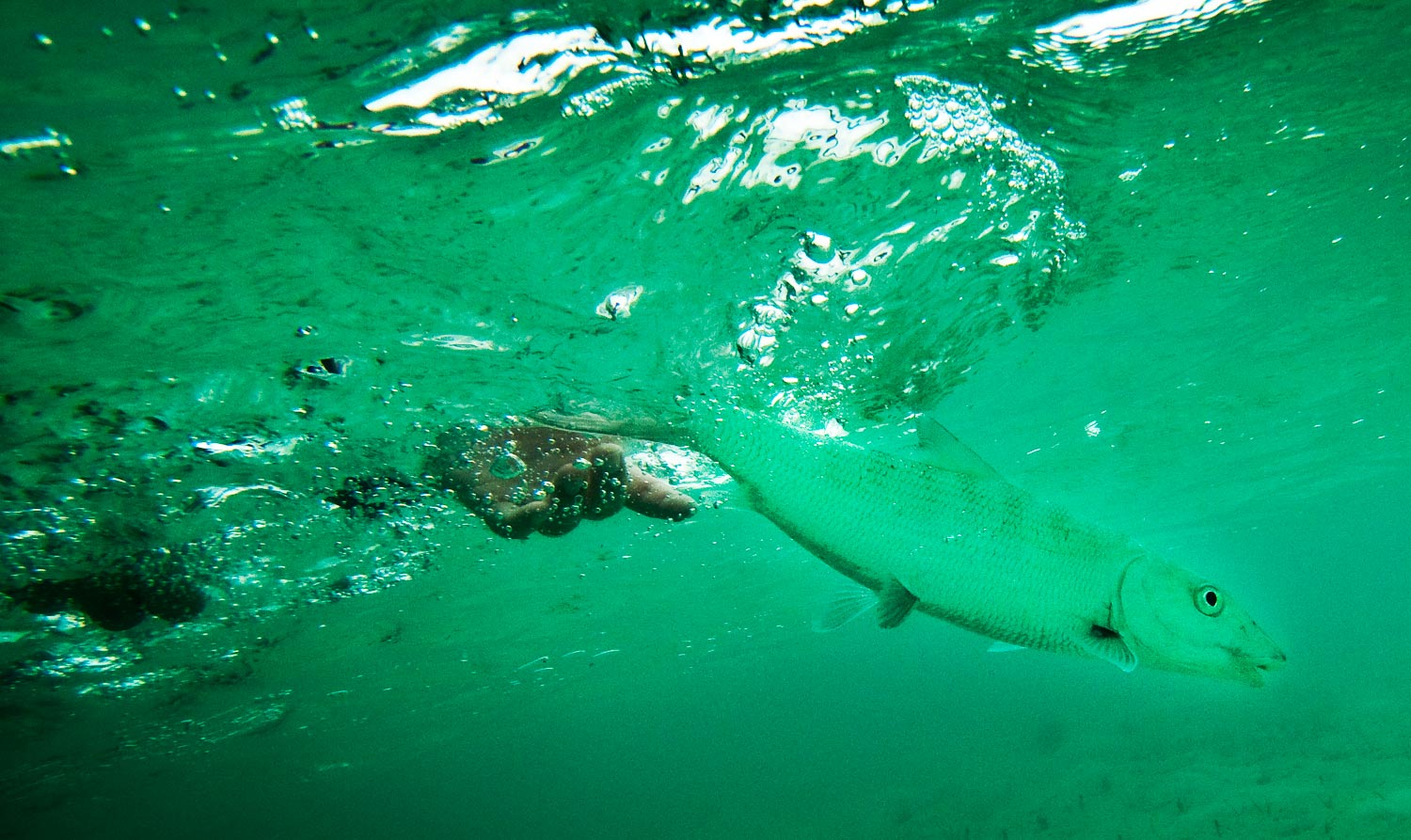
CHANGE THE RETRIEVE BEFORE THE FLY
If the bonefish are following your fly but not eating it, the fly may not be the problem. As fly fishermen, we always want to blame our fly. I think this comes from trout fishing and the idea of matching the hatch but often, whether fishing in fresh water or salt, the problem is the presentation and not the fly.
When you cast your fly to a bonefish and he keys on it and follows the fly for a good ways, then turns off, generally it’s the retrieve he doesn’t like. Often changing it up will solicit the bite. If you’re stripping slow, speed up. If you’re stripping long, go short. Most often I find that a series of short fast strips followed by a pause does the trick. The beauty is that you can make this change immediately and catch the fish at hand.
Read More »Fly Fishing Tips for Stocked Trout
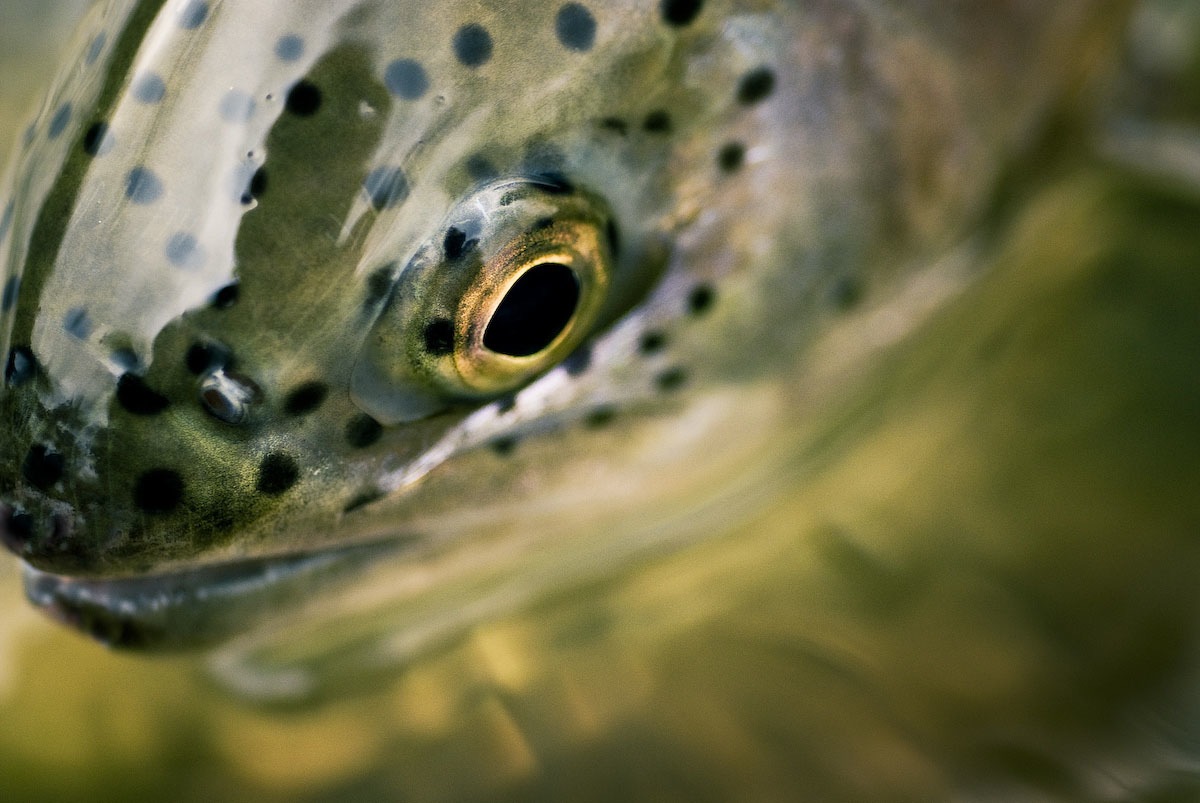
My first memory of bringing a trout to hand with a fly rod took place back in the spring of 1990, on a seasonal trout stream, located 45 minutes north of Atlanta, GA. It was a far cry from a trophy trout at 10-inches, but that freshly stocked rainbow trout, touched my eleven year old fishing soul to the core. I’ll never forget the excitement I felt watching that stocker chase down and eat my olive woolly bugger at my feet. It felt really good for a change, not relying on that plastic blue can of worms to get the job done. From that day forward, I never looked back, and I’ve moved on to become a respectable trout guide in my area and I’ve fly fished for trout all over the world.
A lot of fly fisherman would laugh at me if I brought that fishing memory up in conversation. Many wouldn’t be able to look past the fact that I was fly fishing for stocked trout that weren’t naturally born in a stream or river. If you happen to be reading this post and you’re one of those fly anglers that I’m referring to, just remember that we aren’t all blessed to have easy access to wild trout. For many of us, wild trout populations are so low (because of poor conservation and land management), it’s not even feasible for us to strategically target them, and if it wasn’t for stocked trout, we’d have no trout at all. If you’re fortunate to be blessed with wild trout populations where you live, don’t forget how that special that is, and please don’t make fun or belittle others who take pride in catching stocked trout. You just make yourself look ungrateful and worthy of having wild trout.
Before I get into my fly fishing tips for stocked trout, I’d like to take a moment to mention a couple of reasons I feel stocked fisheries can be good for the sport. For one, they’re a great place to introduce kids and newcomers to fly fishing for trout. Timed correctly, an angler with zero experience can have great success catching trout. Secondly, put and take trout waters provide great locations for anglers who like to harvest trout, to do so without having to illegally poach on special regulation or wild trout fisheries.
Read More »Tim Rajeff’s Double Haul Master Class
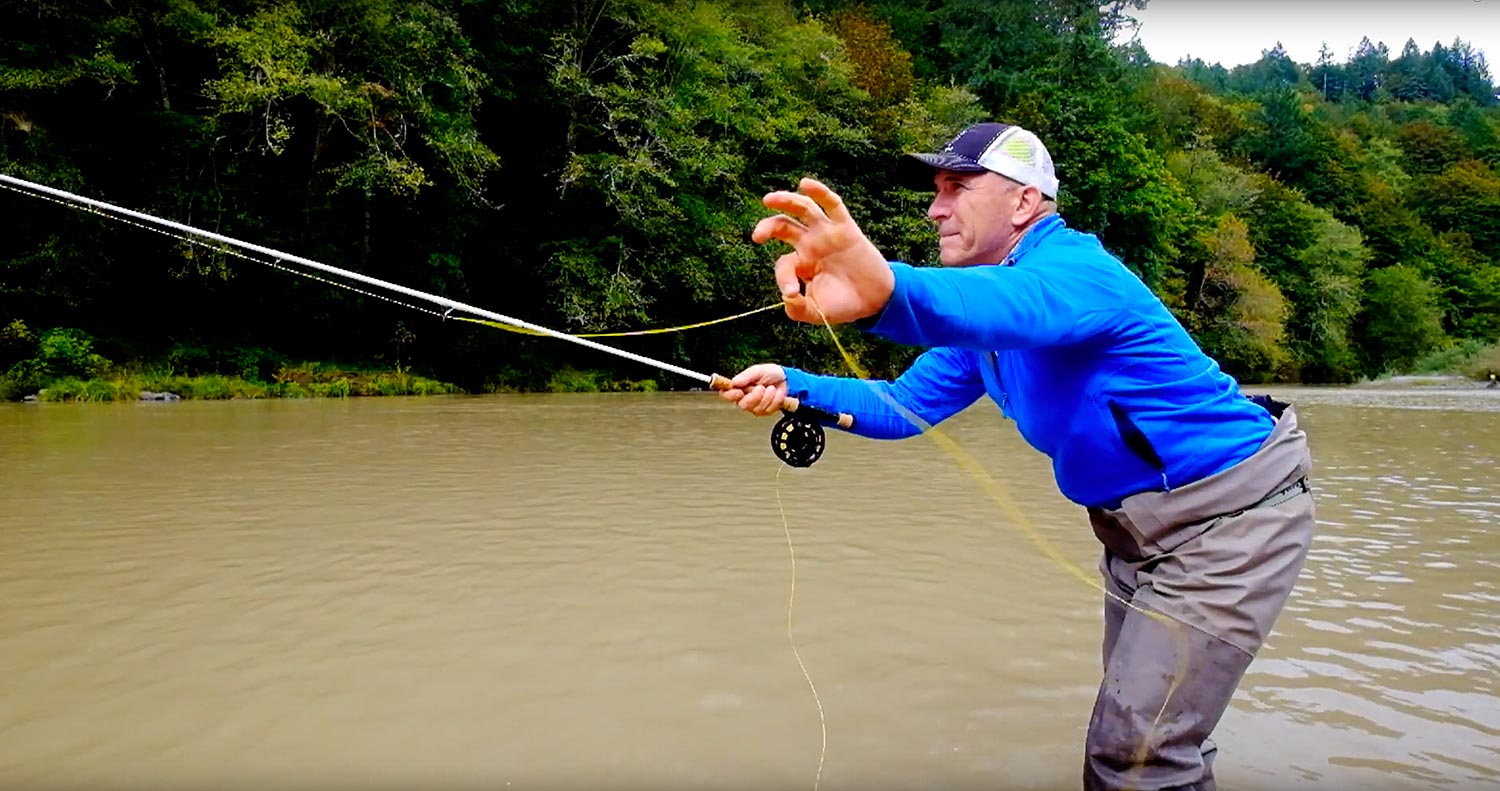
This video can teach you to fly cast and double haul like a pro.
When I asked Tim Rajeff for some tips on the double haul, I got way more than I expected. In just under 4 minutes Tim gave the best presentation I’ve ever seen on fly casting. If you want to improve your fly casting, get more distance and control and cast like a rockstar, take a few minutes to watch this video.
VIDEO TIPS ON THE DOUBLE HAUL FROM TIM RAJEFF
Read More »Sacred Fishing Holes
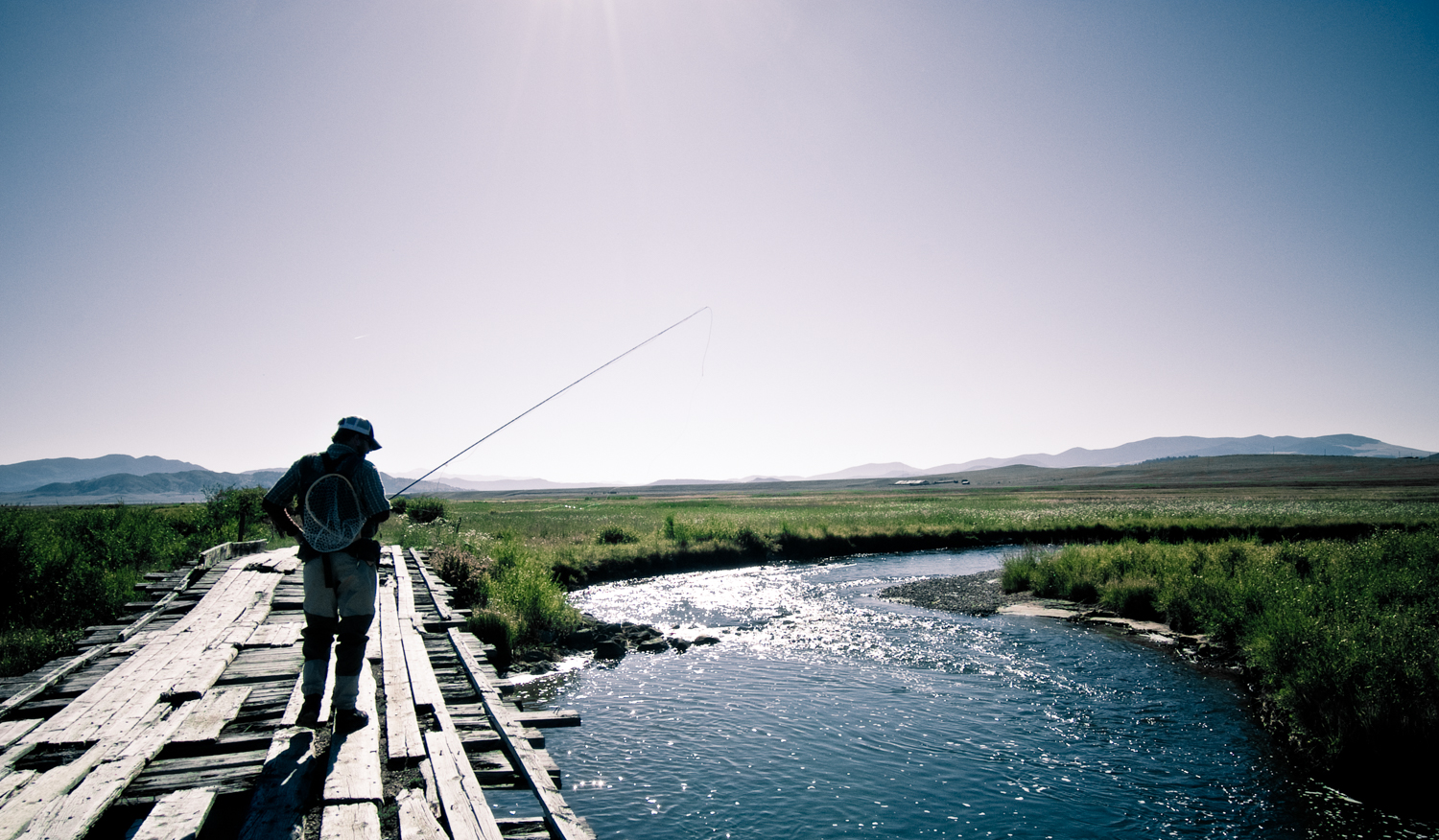
By Alice Tesar
It might have been the coyotes that kept me awake the night prior.
More likely it was thoughts about the section of river we planned to visit that day. I’d heard a lot about the spot and debated it’s worthiness. I had heard that those who wander this stretch of river alone rarely find success, that it was imperative to partner fish, where one person spots the fish from a vantage point and the other casts from the hole below or further down river from the bank. My fishing partner had fished here many times and I was forced to swear secrecy.
“Don’t tell anyone about this spot you wouldn’t mind running into out there,” he told me.
The cool wet morning was filled with anticipation — I sipped my coffee and watched the sunlight peeking over land making everything shimmer. After loading up the truck, my fishing partner and I drove down the dirt road to the river. Pulling off at a nondescript field, we rigged up, took a swig of Fireball (hair of the dog), and hopped the fence startling the nearby grazing cattle. Off to a remote bend in the river we went.
We stumbled through the lumpy pasture to the river, where a drop created by a large fallen cottonwood made a deep pool in the otherwise shallow river. Standing far back on the shore, careful not to scare off any feeding trout in the pool, I cast in.
My indicator drifted along to a tangle of sticks that had accumulated where the river shallowed. Releasing the snagged fly proved difficult without disturbing the water and I feared I’d ruined our chances of catching anything in this hole. A few more casts and my bright orange indicator sunk fast and hard.
Read More »Get Rid of Those Pesky Snags!
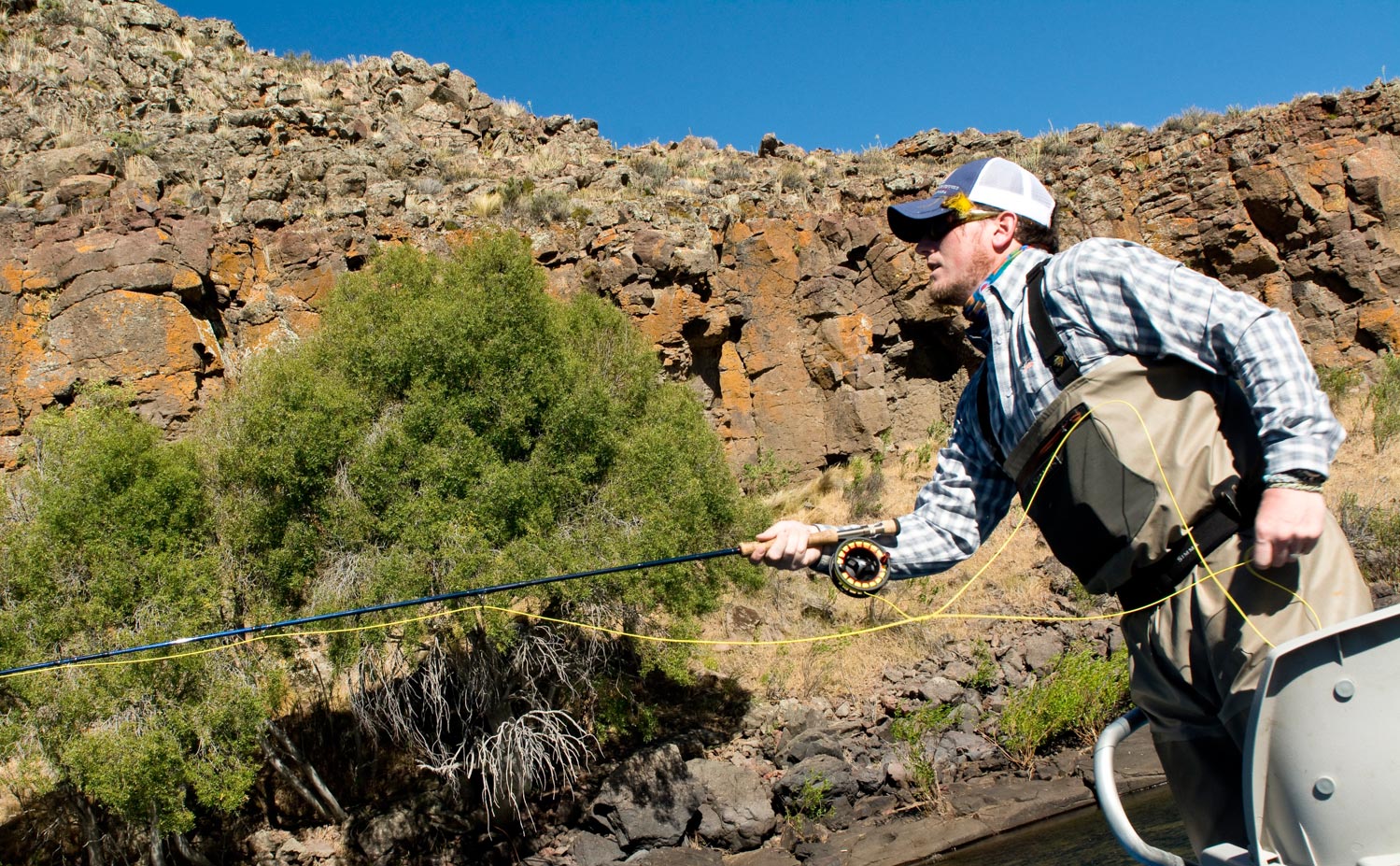
By Justin Pickett
IT’S JUST AFTER SUNRISE AND YOU’VE RUN FIFTEEN MINUTES.
From the boat ramp to the spot where you had previously gathered intel on where the stripers had been slamming schools of bait. There’s a short window though, so you’ve hurried to make sure you’re there when it all goes down. If you miss your shot, then it’s back to the truck with nothing to show for your morning’s efforts.
Your rods are strung up. Flies tied on. Knots checked. Drags are set.
As you work around a point and into one of the fingers of the lake you see the surface boiling. Stripers are crashing on bait with reckless abandon. As you reach the school you jump on the deck and grab your rod, stripping the line from your reel like a crazed lunatic. You make two false casts, slipping line each time, and on the third forward stroke you complete an epic double-haul. An awesomely tight loop speeds past you with your leader and fly in tow…. And then comes to a screeching halt and smacks down in the water, forty feet short of the feeding frenzy. Doh! (Raise dominant hand and accelerate palm towards forehead).
Those damn fly line trolls!
They like to gather up all of your loose fly line while you’re not looking and wrap it around things like coolers, seats, trolling motors, pliers, cleats, bags, straps, beer cans, puppies, etc, etc, etc. They have no mercy!!!
This has probably happened to every one of us in varying scenarios, and if for some reason it hasn’t happened to you, don’t worry, it will. Fly line has the uncanny ability to find things to get itself tangled up in. And believe me it will happen in a most critical moment if you’re not prepared to prevent it from happening.
Whether you are
Read More »Why You Should Invest In Your Casting
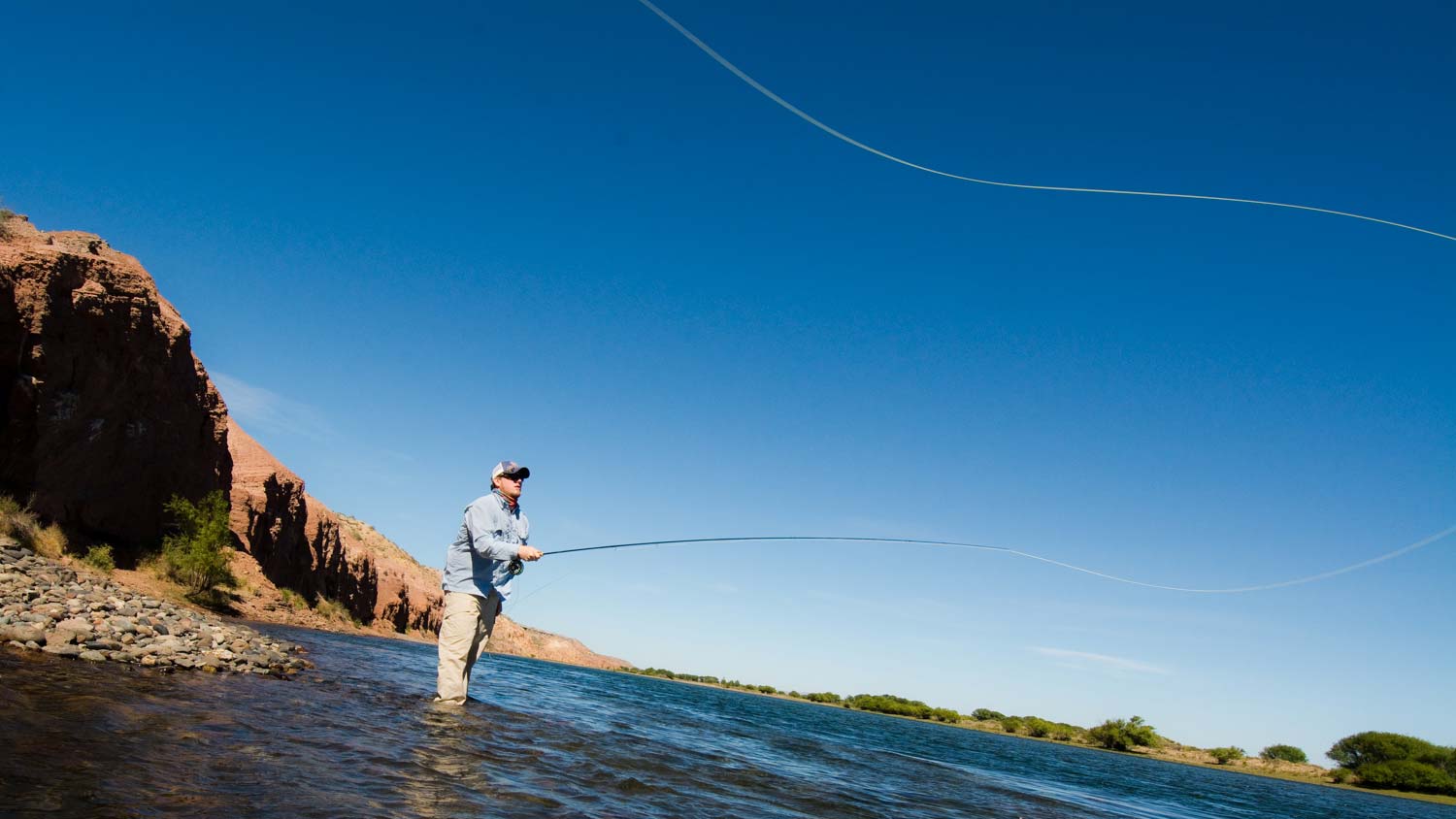
By Justin Pickett
I have never met anyone who could pick up a five-weight fly rod and make consistent, accurate fifty-foot casts without ever having prior experience with fly casting.
I used to play a ton of golf. So much so that at one point, much earlier in my youth, I could hold my own on any given course and typically shoot Par. Nothing to really brag on, but I wasn’t bad. During my time around golf courses, I never met anyone who could walk up to the 1st tee on any given course and drive the golf ball 300yds down the middle of the fairway without ever having swung a golf club before. It takes a considerable amount of learning and practice to develop the skills needed to be able to hit a golf ball with accuracy, control, and distance. And then there are the many other skills, such as putting, chipping, and bunker shots, requiring different strokes, techniques, and timing that must be practiced in order to put an entire round of eighteen holes together. For the vast majority, it’s a large investment in one’s time and effort to become a decent golfer and get the most enjoyment out of your day on the course. On a side note, I have also yet to meet anyone who enjoys looking for golf balls in the woods all day.
I have been fly fishing since the young age of ten. In my thirty-something years, I have fished way more than I ever golfed, and I have to say that I have never met anyone who could pick up a five-weight fly rod and make consistent, accurate fifty-foot casts without having prior experience with fly casting or fly fishing. Just like with golf, it takes a considerable amount of learning and practice to develop the skills needed to be able to consistently complete an accurate fly cast of any distance. Throw in roll casts, water hauls, the double haul, and reach casts and it’s starting to get a little overwhelming for the beginning angler. We haven’t even begun to talk about all the other little pieces, such as mending, hookset, fish fighting, etc. It’s a lot of info and a lot of factors that have to all come together fluidly for the angler to successfully bring fish to hand on a consistent basis, which adds to the enjoyment of our time spent on the water.
I wanted to place a focus on casting, though, because it is the first skill we need to learn in order to place a fly effectively in or on the water, and it is
Read More »